Progress on the programme
“Despite the effects of Covid-19 and challenges in some parts of the supply chain, the Dreadnought ballistic missile submarine programme continues to remain within overall budget and on track for the First of Class, HMS DREADNOUGHT, to enter service in the early 2030s. Recognising the high-levels of uncertainty caused by the pandemic, and particularly the short term uncertainty in our Industrial Partners and the wider Supply Chains, the commercial framework employed during Delivery Phase 2 was rolled forward for a further 12 months to March 2022.”
Costs
“The 2015 Strategic Defence and Security Review estimated that the programme is likely to cost a total of £31 billion (including inflation, over the 35 years of the programme) and set a contingency of £10 billion and set a contingency of £10 billion. The programme remains within its overall budget and, as of 31 March 2021, £10.4 billion had been spent in total on concept, assessment, and delivery phases, of which £1.9 billion was spent in financial year 2020-21.”
Warhead and missile
“As previously reported, on 25 February 2020, Parliament was notified of the Government’s intention to replace the UK’s sovereign nuclear warhead. While the overall programme to deliver the replacement warhead is in its preliminary phases, it continues to be subject to across Government scrutiny, oversight, and approvals processes.The requirements, design, and manufacture of the warhead are sovereign to the UK, meeting our obligations under the Treaty on the Non-Proliferation of Nuclear Weapons.
The UK warhead will be integrated with the US supplied Mark 7 aeroshell to ensure it remains compatible with the Trident II D5 missile and delivered in parallel with the US W93/Mk7 warhead programme. The transition of the current mark 4 warhead to the mark 4A is ongoing, addressing obsolescence to ensure we continue to have a safe, secure, and available stockpile until the UK replacement warhead is available in the 2030s. The UK also continues to participate with US partners on work to extend the life of the Trident II D5 missiles. These life extension programmes will address obsolescence and continue to provide sufficient missile packages, including spares, to support the UK’s current stock entitlement.”
International collaboration
“Collaboration with the US remains strong through our cooperation on Strategic Weapon System and reactor technologies under the terms of the 1958 Mutual Defence Agreement and 1963 Polaris Sales Agreement. Warhead related collaboration includes research on warhead safety, security, and advanced manufacturing technologies taking place under the UK-US Joint Technology Demonstrator project.
We continue to cooperate with France under the TEUTATES Treaty, signed in November 2010, working together on the technology associated with the nuclear stockpile stewardship in support of our respective independent nuclear deterrent capabilities, in full compliance with our international obligations. Progress continues to be made with the delivery of the experimental hydrodynamic capability at Epure in France and associated capabilities at AWE which will allow both the UK and France to conduct independent experiments ensuring both nations’ nuclear weapons remain safe and effective.”



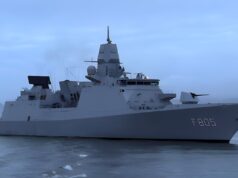
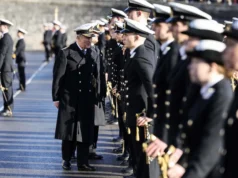
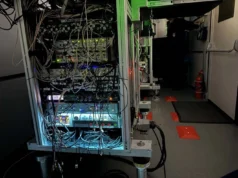
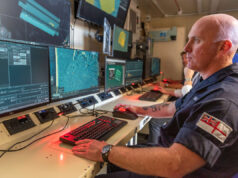
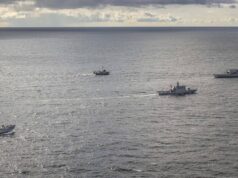


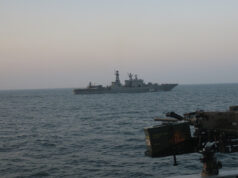
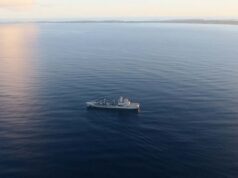
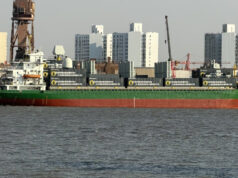

Great diagram…but what is the sausage capacity…I need to know. They usually tell us…
AA
Of equal concern is how do they release the excrement?
Hansard
Is that a new Loo roll curtesy of Parliament
They shoot it at the Russians
It’s part of a top secret defence system…. It’s best described as a squid defence!
Firing TLAM would give away the boats position. The whole point of the nuclear deterrent is that we have known idea of it’s location, and it has to remain undetected.
Sorry mate, had not seen this. Said much the same thing!
Have a good Christmas break pal 👍
Why would it need TLAM? It is supposed to lose itself into the Ocean at 5 knots or less and await Armageddon, against which a 1st strike is imossible.
If it is firing off TLAM it betrays its position. It need only defend itself in extremis., not go on the offensive with TLAM.
Hats off to the submariners stuck in these things for weeks on end. I certainly couldn’t do it.
Especially as they have outside toilets
They are for the submarine deckhands to use.
With Airlock when submerged
Sorry to burst your bubble fella, but, they are the worst place to be after they start launching their missiles. You can guarantee that several will be heading your way in return, and with multiple warheads on each, they don’t have to be that accurate to kill you. 15-20 mins max after you launch your 1st flight!!!
Why would an adversary waste warheads on a now depleted and empty launch system, and a few hundred crew members
Surely if the adversary had the capacity to still launch now precious warheads, it would be against a threat still active, or a target of high value or maximum propaganda value, like a city, industrial centre, or some such
Because it wouldn’t necessarily be depleted or empty. V boats have 16 tubes, an adversary won’t know the missile/warhead combination, so have to treat it as a live threat. It will remain so until destroyed.
You can’t ripple launch a potential 16 missiles in a few minutes, so can expect some back in your direction.
It’ll be empty. The boomers go winchester and then become fast attack platforms, attacking surface targets with torpedos and conventional weapons.
They do? As Deep is a submariner, I think I will listen to the SME!
Unless you are a SM Chris and I’m mistaken?
Firstly. SSBNs are submarines in their own right, perfectly capable of sinking other SMs or WS, it’s not their primary role, launching Trident missiles is.
I don’t think that you are aware of what is involved upon receipt of a valid firing message and actually getting a first flight away.
It’s not just a case of pushing a red button – in this case actually pulling the firing trigger! It’s a drawn out evolution that is constantly practised at sea whilst on patrol, so the CASD boat can meet the time constraints for a launch.
Firing a flight of 4 missiles reduces the weight of the SM by some 240 tonnes over a short period until replaced with a tube full of water. This impacts on the bouyancy of the SM which has to stay in a tight launch profile (depth/speed/pitch and role) for every missile launcher. It takes time to compensate for the weight fluctuations. If you get into flight 2 and 3 launches you will receive something back. As a SSBN isn’t the fastest thing about, typically in say 15 mins it can at best move some 4-6 nm from its start point. Realistically you only need 1 warhead to ruin Ur day, but 2-3 will totally make sure you are only going one way, that’s downwards!!!
So, in theory a SSBN could revert to a SSN role, in reality it won’t make it.
Unless it’s incredibly unlucky, it will survive the launch and disappear again. Most patrol stations are several thousand miles offshore. By the time an aggressor reached its position it would be long gone. You should watch Jive Turkey on Youtube, he is a retired USN submariner, instructor and an SME. He spoke directly about this subject.
Depending on the range between the launch vessel and target, flight time for a Trident missile is anywhere between 5-15ish mins, you cannot ripple fire a flight of 4 missiles in a minute or two, it takes a while longer.
The Russians also have space based ICBM launch detection systems, which will readily detect such a launch and automatically send the data to a ground station, closely followed by one coming back in Ur direction.
During a launch phase, a SSBN doesn’t move very fast, it can’t as it’s priority is to get the missiles away accurately. It also doesn’t accelerate very fast, you will be lucky to have moved 5 miles in the 15 mins after you commence launching. A rocket with a few big bang’s on doesn’t have to be that accurate. They won’t be sending any aircraft or ships after you, it will be an ICBM.
Not for SSBNs, it could be a good idea for the future SSN to have two or three Launch modules for say 6-8 cruise missile per module.
Slightly of track but relivant. It could be a good idea to do a redesign of the Dreadnought class for the future SSNs. A start could be to chop the Trident tubes out, insert three Vertical Payload Modules for 6-8 cruise missiles each or a SBS tube ( I think BAE make these for the US Virginia class) and adapt from there. I would for the future SSN also use the torpedo tube concept of the Swedish A-26 with the standard 6 tube for torpedos( possibly four for heavy torps and two for light torps) and a Multi mission tube for subROVs, Unmanned Underwater Vehicles, SBS delivery vehicle etc and possibly two tubes under the sail for SBS containers. To be honest I would look again at the old concept of having Blowpipe anti air missiles, France seems to be playing with the Mica, Germany with IRIS-T, the US with the AIM-9X and Russia going of in all forms of directions for submarine use. Yet the UK has or had gone the furthest with the concept with its Blowpipe missile and a tv camera, it is even rumored that Israel bought some systems. Other countries are looking at the idea so why don’t we.
So the future SSN could be the engine room of the Dreadnought a new midship section much like the Virginia class, Command and control section from the Dreadnought class, the sail of Dreadnought, and the torpedo tube arrangement of an Astute/A-26. Designed by using existing designs and concepts could save money and speed up construction. However, that would mean a sub of about 380-400 ft and 9,500 tons. I would imagine that the cost would be somewhere about £2 billion each, but what an attack boat if we could build them to this fit out concept, 21 cruise missiles, 50 torpedos and anti ship missiles and some very sneaky stuff.
From what is known about the SSN (R) Programme so far it will share many Systems and Technology from the Dreadnoughts,Reactors and Propulsion being the obvious ones,and will also be significantly bigger than the Astutes.
Submarine technology design is an advancement of stealth and high tech. One hopes that these type of boats will be a big deterrent to Commander Rasputin not forgetting the Chinese Dragon who is exerting itself in areas of the world.The downside is being the boats will take time to build.This order is small in comparison to the above two both wishing to expand their navies.(
The new bond film had HMS Dragon firing her sea viper in land attack? 🙂 A recent report suggested we are a ‘fleet of porcupines’. I have to say it’s depressing the state both governments have left are Navy and rest of the Armed forces.
Of the Vanguard, max of 3 are armed at any one time; each has 16 silos but since 2010 8 are operational. Two are kept in port or on training, one is on CASD and the fourth is kept in the UK for maintenance.
At one time the penny pinchers floated the idea that Dreadnought could proceed with just 3 platforms!
I agree the primary role for the class is to remain silent and therefore they won’t have the speed/mission set of Astute. But it also belies allot of the covert/secretive work the submarine service perform. To not include the potential for flexibility, UUV, UAV, dry dock (UKSF) or to carry cruise missiles is I think missing a trick. For a very limited period one of the type could be used in a more conventional if not critical role.
I believe the US is planning to replace the 4 Ohio’s with up to 12 stretched Virginia’s each capable of deploying 154 or more Tomahawks. We are not the US I know, but I think it’s why all our assets need to be ultra flexible. Because based on past governments we will never had the number of platforms we need, they all need to punch above their weight.
Britain has 20 submarines waiting to be decommissioned and a further seven which are nearing the end of their shelf life. Was fortunate to visit Devonport a while back, but it worries me the UK government has taken so long to get on top of this, it will also eat into the future defence budget further.
In one of the Brosnan 007 films one of the T23s fired a Harpoon in a land attack mode.
You are quite right that our ships and boats need to be flexible, at present they are not. From a defensive point of view the 45s and the 23s offer varying levels of AAW beyond that (after the retirement of Harpoon) neither platform offers anything else. The recently outgoing First Sea Lord addmitted to prefering sensors to weapons but surely one without the other is pointless. Image every 23 and 45 in the fleet being able to identify and track targets all over the world but having to rely on 3 (?) active Astutes to execute. Ideally the senario would involve the same collective identification and tracking then moving to the most suitable asset to attack rather than the only asset available.
Evening Gary,
You appear to be a little confused with your comments regarding the numbers and role of our SSBN force.
We have 4 V boats to keep one at sea on CASD, which is the minimum number that is required for this role. One SM is always at sea and has been since the late 60’s. One will have just returned from its patrol and then enters a maintenance period which may include a docking or not. The 3rd boat will be finishing it’s maintenance period and getting ready for work up prior to deploying to relieve the on patrol boat.
The 4th SM is in dock at Devonport conducting a refit. This is HMS Vanguard, which is currently 3 years late and several hundred million £ over budget. They are complicated bits of kit and very expensive to run.
They are not used for anything else other then CASD for a reason, the other roles are fulfilled by our SSN force, which can deploy SF and do carry TLAM. The two types of SM perform different roles for a reason, they are both highly specialised.
We currently have 20 SMs awaiting disposal and 1 in the process of being decommissioned. Two more T boats will be decommissioned by 2026, followed by the V boats when the Dreadnoughts come online.
Successive governments have delayed disposal of these units because they have not worked out how/where to safety store the bits onboard that contain low level residual radiation deposits. Yes it will be very expensive to dispose of them.
Hi Deep32
Specifically I think your main issue is:-
“They are not used for anything else other then CASD for a reason, the other roles are fulfilled by our SSN force, which can deploy SF and do carry TLAM. The two types of SM perform different roles for a reason, they are both highly specialised.”
By your own admission we have been without one boat. So for a period we have had to cop. Is it so unconventional to think for a very short period one could be re-tasked and surely this might have happened in the past?
I’ve no doubt they are highly specialised. That is the conventional thinking. Israel and smaller nations have to think unconventionally, they don’t even have nuclear submarines. Yet Israel could launch a nuclear TLAM. Maybe they can’t? But the sheer thought they could surely strikes enough fear into any enemy wishing them harm.
We have no idea what the future holds and if Trident should ever become obsolete over night by some new innovation (Laser, hypersonic etc) I just suggested we just allow for a bit of growth in its base design.
This in practical terms might transpire to building 10 missile compartments instead of 8 or giving the project a small increase in budget. The two compartments could lay empty or house future items. The 8 now spare on trident have never harmed the platform. But 8 is excessive.
I did hint that in a conventional war, i.e Falklands where we are against a nation without nuclear weapons, or in emergencies perhaps one of the nuclear deterrent subs could act in the opening salvo (If two of the spare compartments had been converted etc).
UKSF can deploy from Astute, be in a light role or relatively closer to land. In more difficult circumstances a dry dock is pre-installed. The Virginia class submarines are fitted with 12 Vertical Launch System (VLS) tubes. It also has a built-in Navy SEAL staging area. Allot of comments suggested some form of growth potential. But the counter argument knocking them back was that these are too specialised. How many other platforms in the army, navy & air force have at some time had to do something they wasn’t designed for?
Who is to say the boat couldn’t stay silent but launch a silent UUV from the spare compartment. One that the Astutes could then benefit from etc. It just offers flexibility but you obviously hope to never deviate. Just thinking out the box, a rescue vehicle, drone… there are a million possibilities’.
Base message… Britain is often too stingy. Dreadnought will no doubt influence the astute replacement despite one being an attack submarine. The idea being that at 17,200 tons it’s a better candidate to be a ‘mule’ for something ‘specialised’ and unusual than that of a 7.400 ton Astute.
Morning Gary, I get where you are coming from ref unconventional thinking.
Too many people, not carrying a full load of 16 missiles might seem a waste, and that the ‘spare tubes’ could be repurposed, with the SSBN performing additional tasks – in effect a multi role platform!
This wont ever happen to a SSBN, not because of the Navy being stingy, but, because you firstly dont ever multi role your strategic deterrent, but also because you cant really use the tubes for a secondary purpose. They are either used for the Trident missiles system or you convert the SM to another role.
Notwithstanding all the monitoring and launch system equipment that would need removing first, you also need to consider the difference in weight by not having missiles in the tubes. Each missile weighs approx 60 tonnes, so for 16 missiles thats a weight of around 1000 tonnes. Not having them would drastically alter the buoyancy of the SM, dangerously so.
The missile compensation tanks – used when launching missiles can only hold a certain amount of water, the size of the tube and weight of missile are designed so that when a missile leaves the tube, the incoming amount of water broadly replaces the weight of the departed missile, any slight variations are dealt with by the hover and compensation system, so the SM can remain in its launch window and continue to fire its flight of missiles without broaching. When the tubes dont have missiles in, they have a ‘ballast can’ inserted to compensate for the missing weight of the missile, so the tubes are never actually empty, nothing else can go in them either, hence no multi role function.
Astutes have a small swimmer delivery chamber fitted in the fin, this can connect to the ‘Alamanda’ swimmer delivery system they can carry. Its not ideal, but works for us.
Im sure SSN(R) will utilise many of the technologies from the Dreadnought class, which will in turn actually save development time and money. We can only hope that we get more then 7 to replace the Astutes with, and Im sure they will also be fitted with new systems/technologies as SSNs are our true multi role underwater assets, not the SSBN.
Thanks Deep32, that’s an awesome answer! I agree my idea wasn’t most practical, as good as the Astutes are I’m just frustrated we don’t have more or that they can’t carry even more munitions’. That design is pretty much set in stone now, so my last hope hung by the new Dreadnought.
You are right the four Ohio class boats which were converted required extensive modifications & retrofit. Impractical maybe but it be wonderful if the Astute replacement could utilize some vertical launch or mission modules (Perhaps increase volume). When you see the boats get loaded with Tomahawk, it looks quite a time consuming and awkward task (for tube launch). But who knows, we might even see some autonomous drones.
I admit it’s dumb for any SSBN to give up its position but was thinking at the end of a cycle or when it had passed over lead role. the dream was that Britain could have it’s own mini SSGN and leave the Astutes to do what they naturally do best.
I’m very proud of the RN & of course the Submarine service. I was reading about the San Luis yesterday and how it managed to track and evade our surface fleet.
Long story short, submarines have long proven their worth and though not my area at all, the RN Submarine service has my admiration and respect.
Thanks,
Gary
No worries mate, keep reading and asking questions, there are a lot of knowledgeable posters on this and various other sites. I generally find that they are really helpful and are happy to share info with you.
Regards.
The description of the onboard gym looks good..!! 😉
Collaboration with the US remains strong through our cooperation on Strategic Weapon System and reactor technologies:
READ : whitout the US we can do nothing. No weapons, no reactors, but we can build a huge boat.. 🤔 #dependantdeterrence